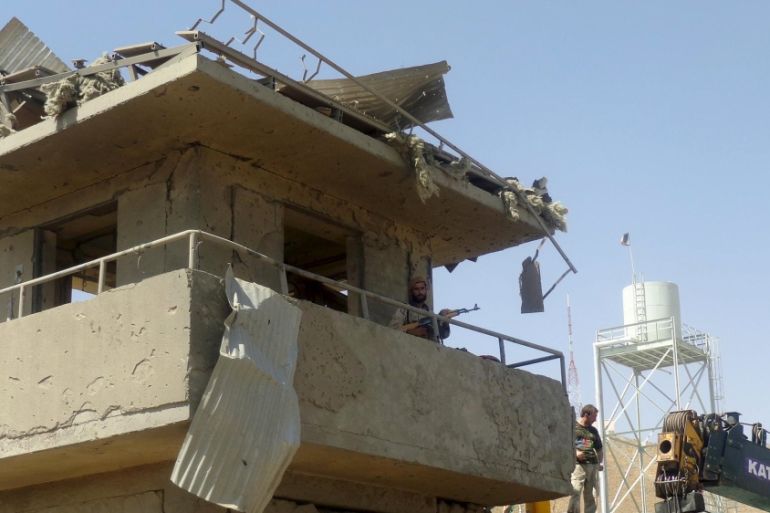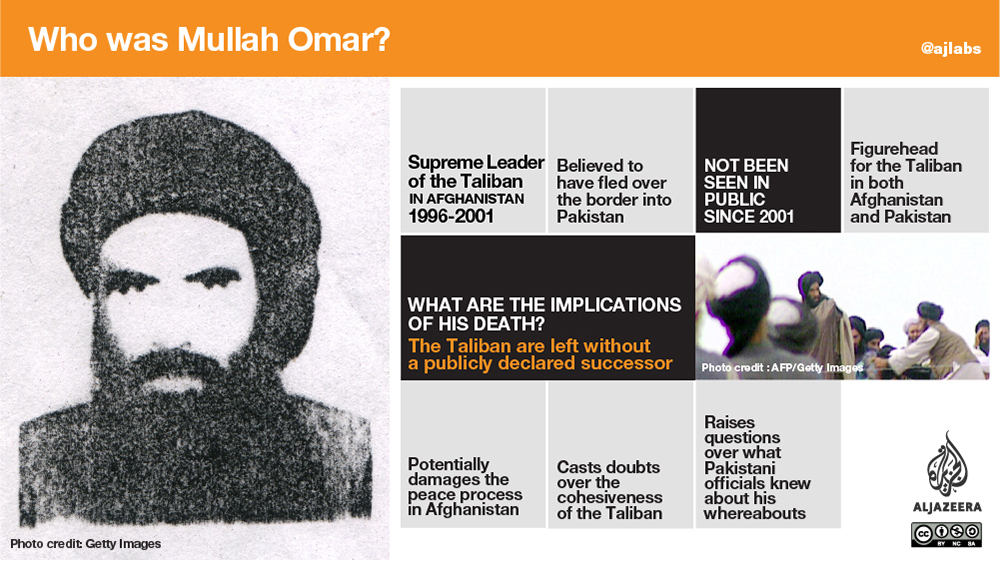Wave of bombings kill dozens across Kabul
More than 50 people killed as gunmen and suicide bombers conduct multiple attacks across the Afghan capital.

A wave of attacks on Afghan police, army and NATO installations in Kabul have killed more than 50 people and wounded hundreds of others, dashing hopes that Taliban fighters might be weakened by a leadership struggle after news of their longtime leader’s death.
The attacks on Thursday and Friday, which included a massive truck bomb in a heavily populated civilian area and a suicide attack on a police academy, were some of the most serious in months and the first in Kabul since the Taliban named a new leader last week.
Keep reading
list of 4 itemsPhotos: Malnutrition threatens future Afghan generations
Photos: Tourist numbers up in post-war Afghanistan
Taliban ban on girls’ education defies both worldly and religious logic
Kabul has frequently been targeted by the Taliban and other insurgent groups seeking to destabilise the fragile government of President Ashraf Ghani, although the scale of the latest attacks was unusually large.
Such a complex and coordinated set of attacks appear to suggest a message of intent from the Taliban, at an especially delicate time following last week’s revelation of Mullah Mohammad Omar’s death and the subsequent leadership dispute.
The new leader Mullah Akhtar Mansour, who had previously been seen as open to peace talks, has pledged to continue an insurgency that has already killed and wounded hundreds this year.
However, some commentators believe Taliban factions opposing Mansour’s leadership could be seeking to kill any hope of future talks by launching their own wave of violence.
RELATED: UN report highlights Afghan conflict’s toll on women
A Taliban spokesman claimed responsibility for the attack on the police academy in Kabul.
“The bomber was wearing a police uniform and detonated his explosives among students who had just returned from a break,” a police official said.
At least 28 people were killed and 22 more wounded at the police academy, according to an Afghan police official who spoke on condition of anonymity. The suicide bomber also died in the incident.
In a separate incident, an explosion struck the capital on Friday close to the airport, security sources said, targeting an area close to coalition bases and Afghan government buildings. Gunfire continued after the attack.
Eight Afghan private security members and one NATO force member was killed in the attack.
The attacks came less than 24 hours after a huge truck bomb exploded near an army compound in a residential area of Kabul, killing at least 15 people and wounding more than 240.
Internal divisions
A UN report on Wednesday said 1,592 civilians had been killed in the first six months of 2015, a six percent fall over last year, while the number of injured jumped four percent to 3,329.
|
|
The casualties have reached their highest level since the UN began issuing its authoritative reports in 2009.
The violence has taken a specific toll on women and children, with a 23 percent rise in women casualties and a 13 percent rise in child casualties.
The statistics are a grim indicator of rising violence as the Taliban’s attacks spread north from their traditional southern and eastern strongholds.
US-led NATO forces ended their combat mission in Afghanistan in December, but a 13,000-strong residual force remains for training and counter-terrorism operations.
The Taliban face growing internal divisions afterMansour was announced as the new head of the movement on Friday, following their confirmation of the death of Mullah Omar.
